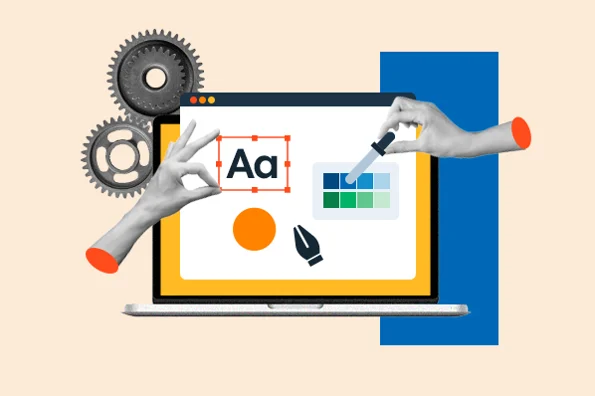Is Website Development a Capital Expenditure?
In todays digital age, having an online presence has become essential for businesses. Building a website is often the first step towards establishing a robust online identity. However, when it comes to accounting practices, determining whether website development should be classified as a capital expenditure or an operating expense can be a complex decision. This article aims to explore the factors that influence the classification of website development costs and shed light on whether it should be considered a capital expenditure.
Website designing company in Lucknow
Defining Capital Expenditure
Before delving into the specifics of website development, lets first understand the concept of capital expenditure. In accounting, capital expenditures refer to long-term investments made by businesses in assets that are expected to generate benefits over an extended period, usually exceeding a year. These assets typically contribute to the companys revenue generation or enhance its operational capabilities.
In the world of finance and accounting, capital expenditure (CapEx) plays a crucial role in determining the long-term success and growth of a business. Whether its acquiring new assets, improving existing infrastructure, or expanding operations, capital expenditure involves strategic investments that can yield significant returns over time.

Capital expenditure refers to the funds allocated by a company to acquire, upgrade, or maintain long-term assets that are essential for its operations. These assets can include physical items like buildings, machinery, equipment, and vehicles, as well as intangible assets such as software, patents, and trademarks. Unlike day-to-day operational expenses, capital expenditures are aimed at generating long-term benefits and have a lasting impact on a companys performance and growth.
Importance of Capital Expenditure
- Asset Expansion: Capital expenditures enable businesses to expand their asset base, which forms the foundation for future growth. Whether its purchasing new machinery to increase production capacity or acquiring additional office space to accommodate a growing workforce, these investments position the company for enhanced operational efficiency and revenue generation.
- Technological Advancements: In todays rapidly evolving business landscape, investing in technology is essential for staying competitive. Capital expenditure allows companies to upgrade their technological infrastructure, implement advanced software systems, or adopt innovative solutions that can streamline processes, boost productivity, and improve customer experience.
- Improved Efficiency and Cost Reduction: Capital expenditures can also lead to cost savings in the long run. Upgrading outdated equipment or implementing energy-efficient technologies can result in reduced maintenance costs, lower energy consumption, and increased overall efficiency. These investments often pay off by lowering operational expenses and improving profitability over time.
- Enhanced Competitive Advantage: By making strategic capital investments, businesses can gain a competitive edge in the market. Whether its through infrastructure improvements, research and development, or the acquisition of intellectual property, capital expenditures contribute to the development of unique capabilities, differentiation, and innovation, allowing companies to stand out from their competitors.
Managing Capital Expenditure
Website designing company in Lucknow
Effective management of capital expenditure is essential for maximizing returns and maintaining financial stability. Here are some key considerations:
- Strategic Planning: Capital expenditure decisions should align with the companys long-term strategic goals. A comprehensive planning process that evaluates potential investments considers market trends, and weighs risks versus rewards is crucial for making informed decisions and allocating resources effectively.
- Financial Analysis: Conducting a thorough financial analysis is vital to assess the feasibility and potential return on investment of capital expenditures. Factors such as projected cash flows, payback periods, return on investment (ROI), and net present value (NPV) should be carefully evaluated to determine the financial viability and profitability of the proposed investments.
- Budgeting and Prioritization: Companies should establish a capital budgeting process that sets clear guidelines for allocating funds to various projects or assets. Prioritization should be based on factors such as urgency, potential impact on revenue generation, cost savings, and strategic importance to the business.
- Monitoring and Evaluation: Continuous monitoring and evaluation of ongoing capital expenditures are crucial to ensure projects are progressing as planned and generating the desired results. Regular financial reporting, tracking key performance indicators, and adjusting strategies when necessary are essential for effective capital expenditure management.
Capital expenditure is a fundamental component of a companys growth strategy, enabling businesses to invest in long-term assets, embrace technological advancements, and enhance their competitive position. By making wise and well-planned capital expenditures, businesses can improve operational efficiency, reduce costs, and position themselves for sustained success in an ever-evolving marketplace. Proper management of capital expenditure through strategic planning, financial analysis, budgeting, and ongoing evaluation is key to optimizing returns and maintaining a strong financial foundation for future growth.
Website Development: Capital or Operating Expense?
Website development costs can be substantial, involving expenses related to design, coding, content creation, hosting, and ongoing maintenance. The classification of these costs primarily depends on how the website is used within the organization. Here are some key factors to consider:
- Functionality and Nature of the Website: If the website is designed to provide a long-term benefit to the business, such as acting as an e-commerce platform, customer portal, or comprehensive informational resource, it is likely to be classified as a capital expenditure. Such websites contribute to revenue generation, improve operational efficiency, or facilitate business growth.
- Enhancement of Existing Website: If the development costs are incurred to significantly enhance or upgrade an existing website, it may be treated as a capital expenditure. These enhancements often involve substantial modifications or additions that result in an improved online presence, expanded functionality, or increased user engagement.
- Custom-Built vs. Template-Based Websites: Custom-built websites, tailored specifically to meet a companys unique requirements, are more likely to be considered capital expenditures. On the other hand, template-based websites, which involve minimal customization and rely on pre-designed themes, may be treated as operating expenses.
- Length of Benefit: If the website is expected to provide benefits beyond the current fiscal year, it is more likely to be classified as a capital expenditure. This is especially true when the website is expected to generate long-term revenue streams or facilitate ongoing business operations.
- Legal and Regulatory Requirements: In some jurisdictions, accounting regulations may specifically address the treatment of website development costs. It is crucial to comply with the applicable accounting standards and seek professional advice to ensure proper classification.
Determining whether website development should be classified as a capital expenditure or an operating expense depends on several factors, including the intended functionality, customization, and expected benefits. A website that serves as a revenue-generating platform enhances operational efficiency, or contributes to long-term business growth is more likely to be considered a capital expenditure. On the other hand, basic websites with minimal customization or those primarily used for short-term marketing campaigns may be treated as operating expenses.
It is important for businesses to consult with accounting professionals or adhere to the relevant accounting standards and regulations in their jurisdiction. Proper classification of website development costs ensures accurate financial reporting and aligns with the overall financial goals and strategies of the organization.
In conclusion, while there is no definitive answer to whether a website development is always a capital expenditure, careful consideration of the factors mentioned above can help businesses make informed decisions and appropriately classify website development costs in their financial statements.
How Can We Determine if a Website is a Capital Expenditure?
In the digital age, websites have become indispensable for businesses as they serve as the online face of the company and a key platform for engaging with customers. However, determining whether website development qualifies as a capital expenditure can be a complex task.
Significance of Website Development
Website designing company in Lucknow
Websites are no longer just optional marketing tools; they have evolved into strategic assets that drive business growth. When a website is developed with significant enhancements and functionalities that expand market reach, improve customer engagement, or support e-commerce activities, it can be considered a capital expenditure.
- Long-Term Benefits
Capital expenditures are investments in assets that provide long-term benefits to a business. Websites, when developed with a focus on creating a sustainable online presence, can contribute to a companys revenue streams over an extended period. A well-designed website with valuable content and features can attract more visitors, generate leads, and increase sales conversion rates, thereby providing long-term value to the business.
- Internal Development Costs
If a company employs its own team or hires external contractors to develop the website, the costs associated with salaries, wages, and other directly attributable expenses can be considered capital expenditures. These costs are incurred in the process of creating a capital asset—the website itself—which is essential for the companys operations and revenue generation.
- Substantial Enhancements and Customization
When a website development project involves significant enhancements or customization beyond routine maintenance or updates, it indicates a capital expenditure. This includes creating a new website from scratch, a major redesign, or substantial improvements in functionality. Such investments aim to acquire or extend the life of an intangible asset—the website—which aligns with the concept of capital expenditures.
- Comparing Website Development with Tangible Assets
While websites are intangible assets, comparing their development to the acquisition of tangible assets can help determine if they qualify as capital expenditures. Just as companies invest in physical assets like buildings, machinery, or equipment to facilitate their operations, investing in a website can be seen as acquiring an intangible asset that serves as a crucial business tool for the long term.
Determining whether a website development is a capital expenditure requires careful consideration of its significance, long-term benefits, costs, and comparability to other tangible assets. A website can be classified as a capital expenditure when it involves significant enhancements, customization, and the intention to create a sustainable online presence that contributes to the companys growth and revenue generation. However, it is essential to consult with accounting professionals or adhere to accounting standards to ensure accurate classification and treatment of website development costs in financial statements. Properly recognizing website development as a capital expenditure can impact financial reporting, depreciation or amortization schedules, and overall business profitability.
Categories: Digital Marketing












Leave a comment